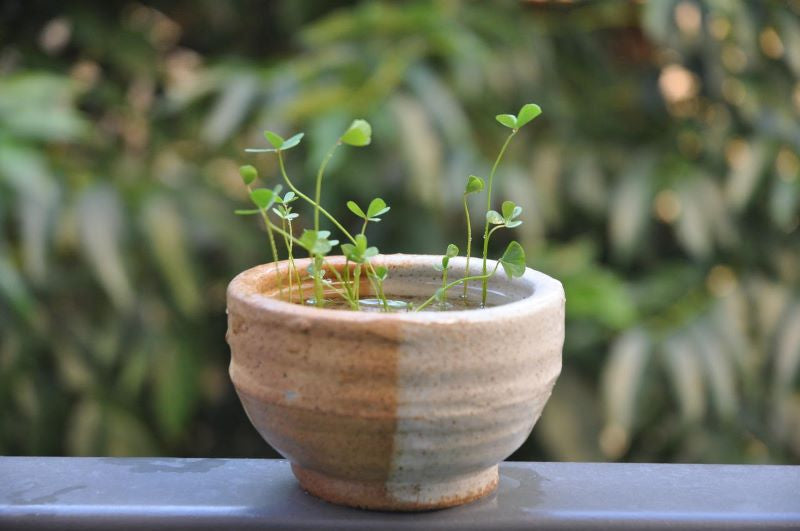
7 Steps to Create Your Own Mini Pond
Written by: Bryson and Team Buce Plant
I’m going to assume that if you’re reading this blog post, you keep a planted aquarium. Oftentimes, enthusiasts of planted aquaria find themselves with an excess amount of plants. I hate tossing trimmings or plant material of any kind.
In turn, I’ve taken to adding suitable plants to tubs and buckets outside. These containers get quite lush and messy from the amount of sunlight they receive. I like how my tubs look, but you may be more stringent on the aesthetic of your back porch and may have an adversity to such setups. Being in quarantine gave me more time to dabble in different aspects of horticulture resulting in the creation of mini ponds!

These minuscule bowls are super simple to cobble together.
Materials needed:
- a small container
- potting soil (Buceplant.com recommends using an aquatic plant subsrate like UNS Controsoil instead of potting soil for optimum growth)
- play sand/gravel
- a nice rock or stone (optional)
- plant scraps
Ceramic bowls make an excellent choice to contain a mini garden. In my pictured example below, the bowl was handmade by my sibling. It was too bulky to use for eating so I decided to up-cycle it!
Step 1:
Acquire your container, be it plastic, glass, or ceramic.
Make sure it’s leak-proof.
To make my second one, I decided to use an old fish bowl that holds a little more than 2 cups of water (don’t worry, I've never kept any fish in it). At their bare bones, these are emersed Walstad tanks! Those familiar with Walstad style tanks will know what comes next.
Step 2:
Take your potting soil and sift it using an old fish net over a container. You want the fine dust that falls out your net, not the soil/mulch left in the net.
I didn’t remineralize my soil, but feel free to put that amount of work into it. Take my instructions and alter them to your situation.
Step 3:
Add the sifted potting soil and play sand/gravel in a 1:1 or 1:1:1 mix to your container (1 cm deep) like shown in the pictures below.
I’m quite liberal with my amounts when I’m setting things up for emersed growth and when using smaller containers because if too many nutrients get flushed out into the water, then I can simply do many 100% water changes.
Mix them together and add water to barely cover.
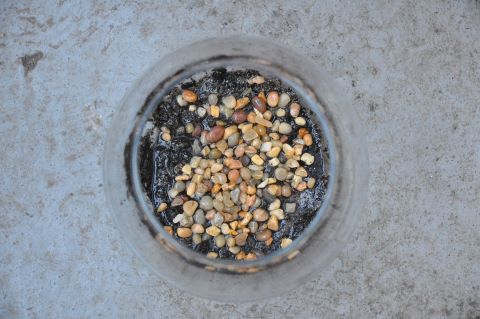
Step 4:
Cap with a 2 cm layer of play sand or fine gravel.
I prefer sand because I find that it keeps the dirt down better. Remember to rinse your sand! I didn't and you'll be able to tell in the subsequent photos.
Add your rock(s) at this point if you want a mini scape.
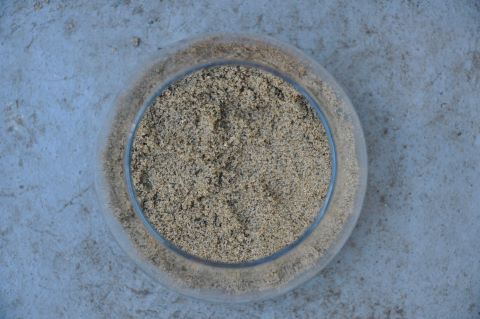
Step 5:
Prep your plants.
Trim them down into portions that can be planted in your bowl.
For this bowl, I am using Ludwigia arcuata x repens, Monte Carlo, and a marsilea species. Marsilea is a personal favorite because of its growth. In its emersed form, it forms tall shoots adorned with a four leafed clover. I can’t attest to its ability to bring luck, but I can say that they look nice!
Pictured above: Ludwigia arcuata x repens
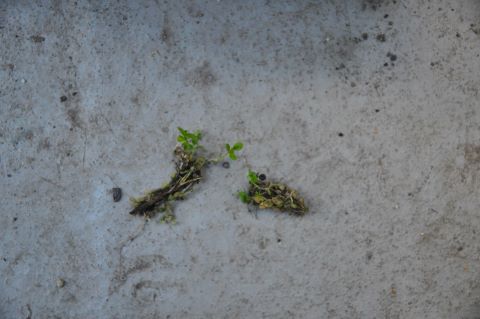
Pictured above: Monte Carlo
Pictured above: marsilea species
Now, depending on where you live, some plants may or may not be suitable for outdoor life. Make sure to do your research on the living conditions of your plant.
If it’s helpful, I live in an area where the weather stays between 40 to 80 degrees Fahrenheit. I’ve had good luck with Riccia fluitans, Micranthemum “Monte Carlo,” Micranthemum micranthemoides (Pearlweed), Hydrocotyle tripartita “Japan,” Marsilea, and Myriophyllum aquaticum (Parrot’s Feather) outside year-round. I’m currently testing some Ludwigia and Rotala species on their survivability.
Those of you that live in harsher climates, like where it snows, may have to move your mini ponds indoors over winter. Those of you in more tropical climates can leave your bowls outside indefinitely! In addition, you’ll probably be able to utilize a larger range of species!
Step 6:
Plant your plants!
You can think of this as an aquascape and plan your planting accordingly. Tall stem plants in the back and lower growing plants to the front. If you’re planning on a monoculture, it won’t matter. I highly recommend Marsilea species, Monte Carlo, Pearlweed, or Eleocharis species for monocultures.
Try to plant as deep as possible to give the plants immediate access to the soil.
Be sure to mist throughout the entire process; you don’t want to dry out your plants.
Step 7:
Top off and enjoy! Find a nice spot to display your mini pond.
I hope this article helped or inspired you to do something more with your trimmings that are just sitting in a bucket until they rot!
Tell us - Was this article helpful? Please leave a comment below!
If you have any questions regarding this article, please DM us on Instagram, Facebook, or email support@buceplant.com so we can assist you - @buceplant






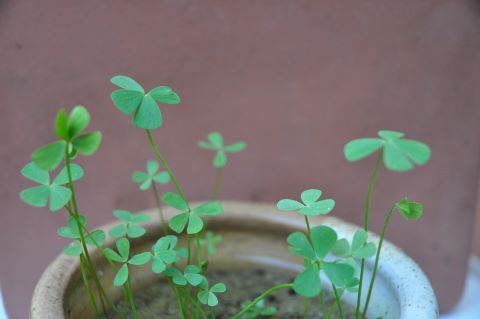
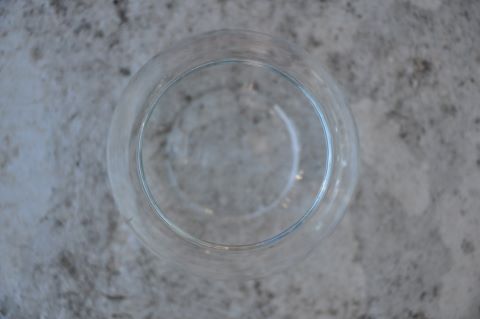
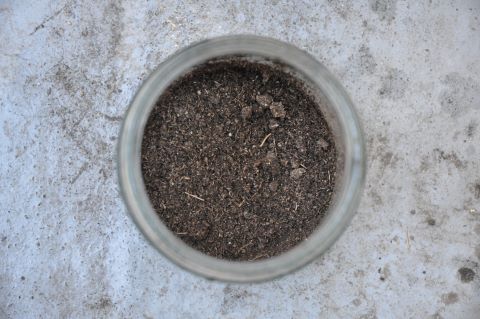


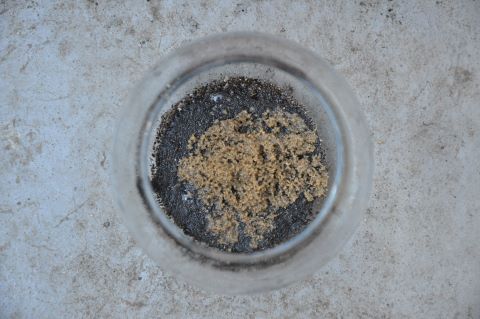
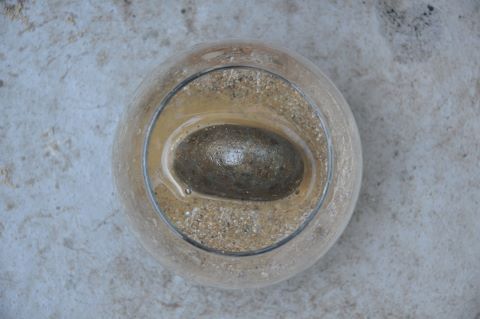
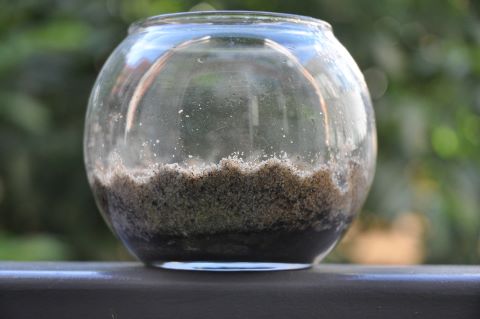
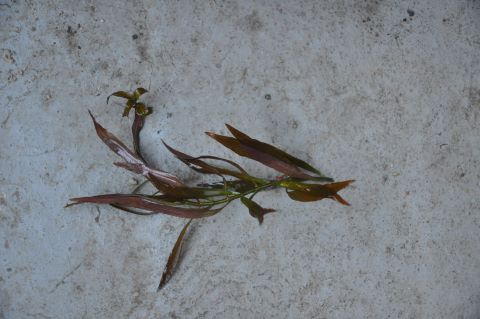
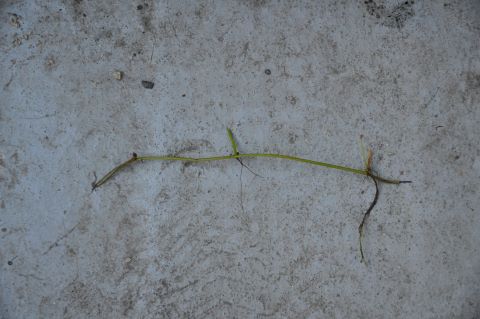
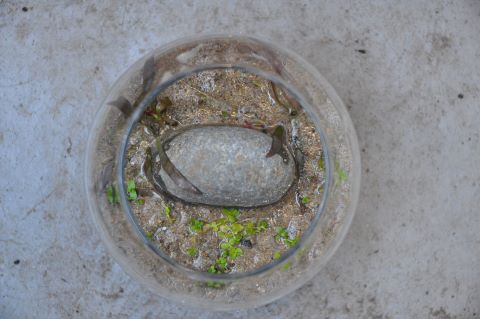
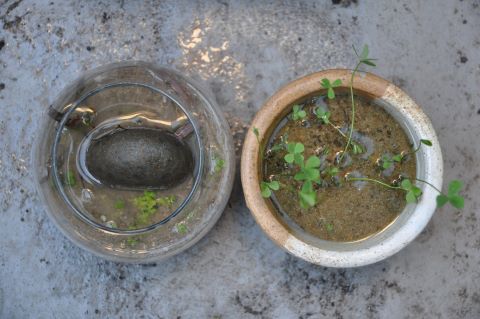
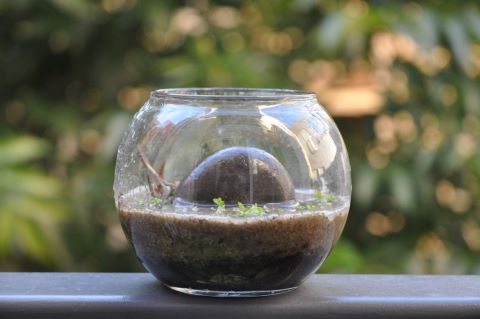
Leave a comment